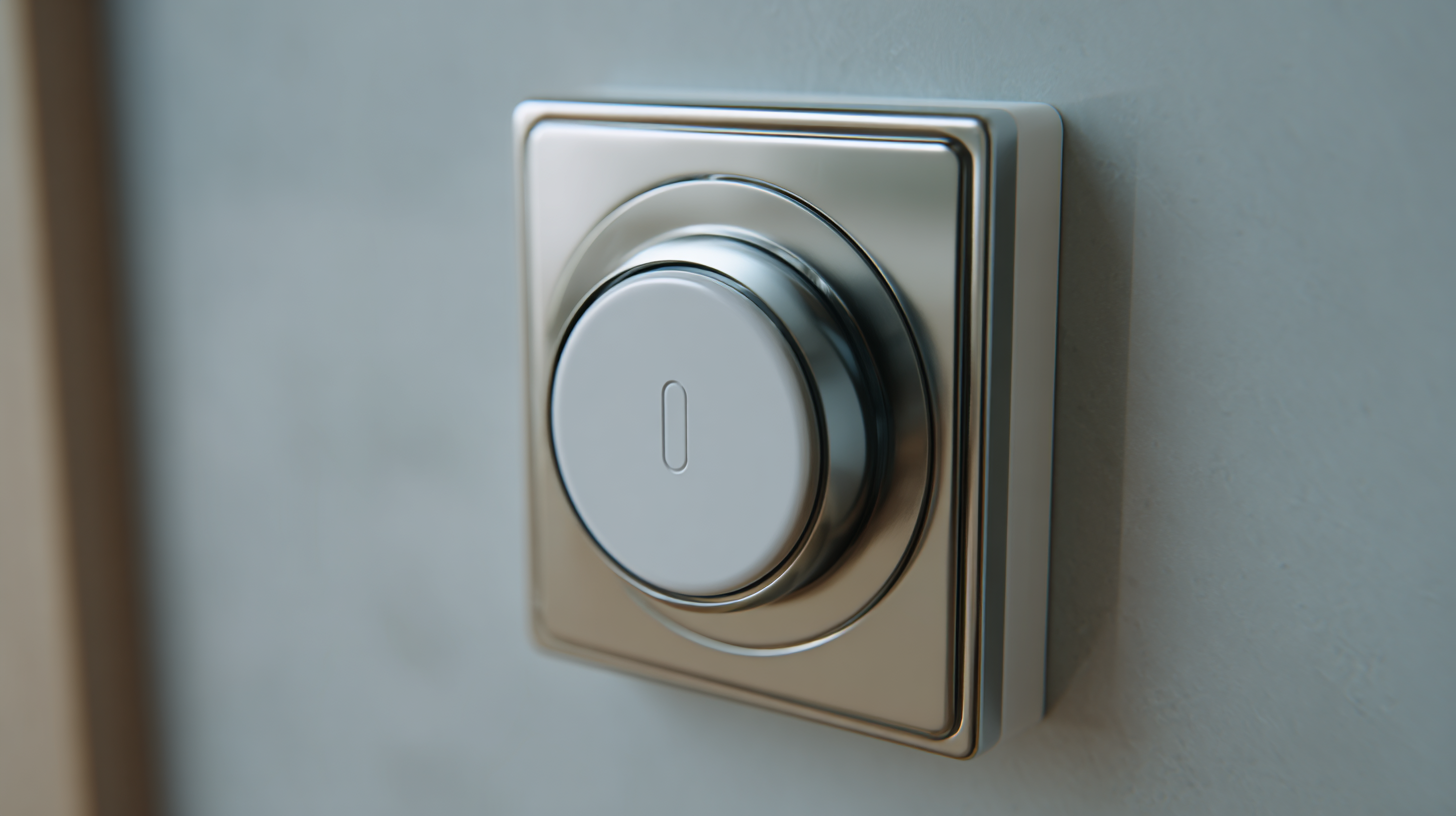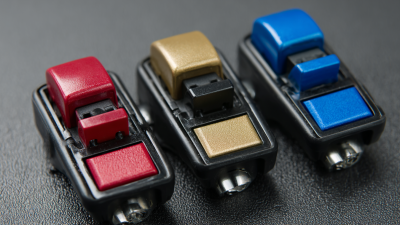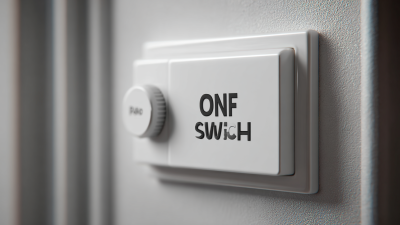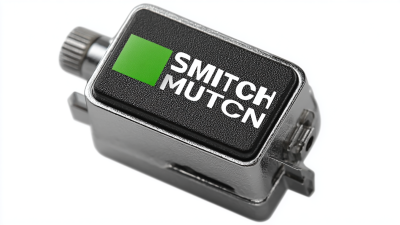How to Choose the Right Push Button On Off Switch for Your Needs
Choosing the right Push Button On Off Switch for your needs can seem daunting due to the vast array of options available on the market today. These switches serve a critical function in various applications, from simple household devices to complex industrial machinery. Understanding the specific requirements for your project or application is essential before making a decision. Factors such as voltage ratings, current capacity, and environmental considerations play a significant role in ensuring the switch you select will perform reliably and safely. Additionally, the design and ergonomics of the Push Button On Off Switch can affect user experience and accessibility.

In this guide, we will equip you with the necessary knowledge to make an informed choice, covering everything from the types and materials of switches to installation tips and troubleshooting advice, so you can confidently select the perfect switch tailored to your needs.
Understanding Different Types of Push Button On Off Switches
When selecting the right push button on/off switch, it's essential to understand the various types available. Push button switches can be categorized based on their design, functionality, and application. The most common types include momentary and latching switches. Momentary switches only remain in the 'on' position while pressed, making them ideal for temporary applications, such as reset buttons or alarms. In contrast, latching switches maintain their state until pressed again, offering convenience in scenarios where continuous operation is required.
According to a market research report by Fortune Business Insights, the global pushbutton switch market is expected to grow from $1.54 billion in 2020 to $2.09 billion by 2028, driven largely by the increasing demand for automation in various sectors. Additionally, data from Research and Markets shows that industrial applications are the primary drivers for this growth, with push button switches being crucial in controlling machinery and processes. Understanding these types and their specific applications can significantly impact the efficiency and safety of operations, ensuring you select the most suitable switch for your needs.
Understanding Different Types of Push Button On Off Switches
Key Factors to Consider When Choosing a Push Button Switch
When selecting the right push button on/off switch, several key factors must be considered to ensure compatibility with your specific needs. First and foremost is the switch's electrical rating, which typically includes voltage and current specifications. According to a report by Allied Market Research, the global push button switch market is expected to reach $2.3 billion by 2025, underscoring the importance of understanding the power requirements of your application to prevent potential equipment failures.
Another crucial aspect is the switch’s durability, often measured in terms of its lifecycle and environmental resistance. Many switches are designed for a limited number of actuations, with industrial-grade models often rated for over 1 million cycles. It’s vital to choose a switch that can withstand the operational stresses of your environment, such as extreme temperatures or moisture.
Tips: Always check the IP rating, which indicates the switch's protection level against dust and water. A higher IP rating is advisable for outdoor installations or damp locations. Additionally, consider the switch's tactile feedback; a switch that provides a clear click can enhance usability in high-traffic areas.
Assessing Compatibility with Your Electrical System
 When selecting a push button on-off switch, compatibility with your electrical system is paramount. An important factor to consider is the voltage and current ratings of the switch, which should align with your system's requirements. For example, according to recent industry reports, electrical systems in various applications demand specific ratings to ensure safety and efficacy. A mismatch can lead to failures or hazardous situations, emphasizing the need for precise compatibility assessments.
When selecting a push button on-off switch, compatibility with your electrical system is paramount. An important factor to consider is the voltage and current ratings of the switch, which should align with your system's requirements. For example, according to recent industry reports, electrical systems in various applications demand specific ratings to ensure safety and efficacy. A mismatch can lead to failures or hazardous situations, emphasizing the need for precise compatibility assessments.
Additionally, features such as electromagnetic compatibility (EMC) are crucial in minimizing interference in multi-device systems. Recent studies have highlighted that electromagnetic interference can disrupt signals in complex setups, such as multiconverter power systems. Therefore, ensuring that your selected switch meets EMC standards is vital for optimal performance. The integration of specialized arrangements, as observed in the arrangement of thermoelectric generators (TEGs) with DC/DC converters, further illustrates the importance of a tailored approach to compatibility. In your evaluation, consider not just the switch itself but also how it will interact with existing components in your system to maximize efficiency and reliability.
Evaluating Durability and Environmental Resistance of Switches
When selecting a push button on-off switch, evaluating durability and environmental resistance is crucial for ensuring longevity and reliability. These switches are often exposed to various conditions, including moisture, dust, and extreme temperatures. Therefore, choosing a switch that meets IP (Ingress Protection) ratings can provide information on its resistance to these external factors. For instance, an IP67 rating indicates that the switch is completely dust-tight and can withstand immersion in water up to a specified depth, making it ideal for challenging environments.
Tip: Always consider the application context when choosing a switch. If it's for outdoor use, look for switches with UV resistance and robust materials that can endure harsh weather conditions.

Additionally, the construction material of the switch plays a vital role in its durability. Metal switches typically offer greater strength and are less prone to damage compared to plastic alternatives. However, plastic switches can be effective in environments where corrosion is a concern.
Tip: Before finalizing your choice, check for manufacturer specifications on material durability and perform compatibility assessments with the intended environment to avoid premature failure.
Tips for Installation and Maintenance of Push Button Switches
When selecting push button on-off switches, installation and maintenance are critical factors that directly influence the longevity and performance of these devices. According to a report by the National Electrical Manufacturers Association (NEMA), improper installation can lead to a failure rate that is up to 15% higher than devices installed following best practices. To ensure optimal performance, it's essential to follow the manufacturer's guidelines regarding mounting positions and wiring configurations. Always use multi-strand wire, as it offers better flexibility and reduces the risk of breakage during normal use.
Regular maintenance is also vital in extending the life of push button switches. A study by the International Electrotechnical Commission (IEC) indicates that annual inspections can detect wear and tear early on and prevent unexpected failures, which ultimately minimizes downtime in production environments. Cleaning the exterior of switches and ensuring that connections remain secure can enhance safety and functionality. Implementing a routine check-up plan not only prolongs the lifespan of the switches but also ensures they remain effective and reliable, contributing to overall system efficiency.
Related Posts
-

Ultimate Guide to Selecting the Perfect 3 Way Rocker Switch for Your Electrical Projects
-

Leading Push Button Starter Switch Manufacturers in China at the 137th Canton Fair
-

Unmatched Excellence in Manufacturing Best Push On Off Switch from a World Class Chinese Factory
-

Discovering Top Quality Suppliers for Best Push On Off Switches Your Comprehensive Guide
-

2025 Market Insights: The Rise of Best Push Button Starter Switch in Global Manufacturing
-

Unleashing Excellence: Premium Micro Switch Push Buttons from China for Global Buyers

